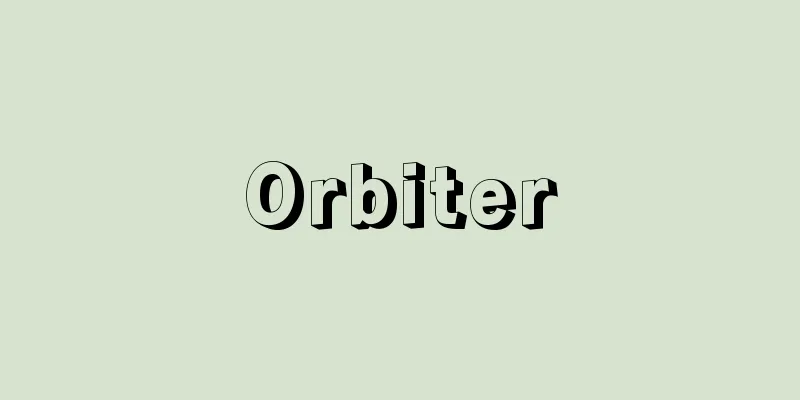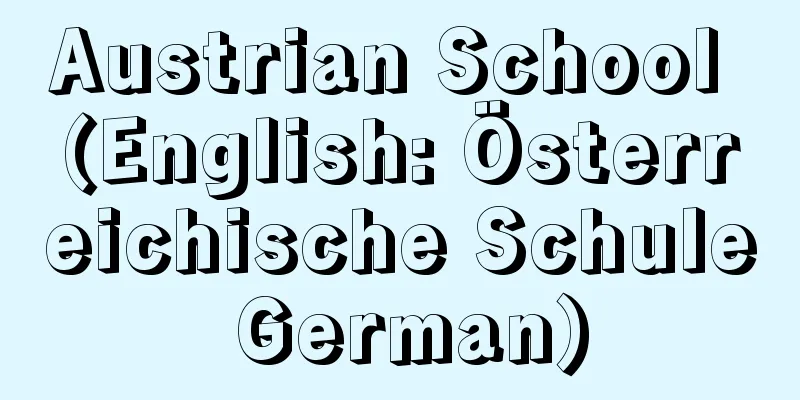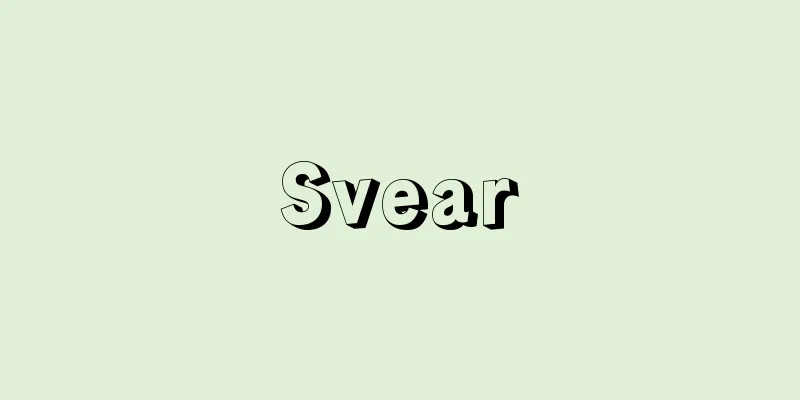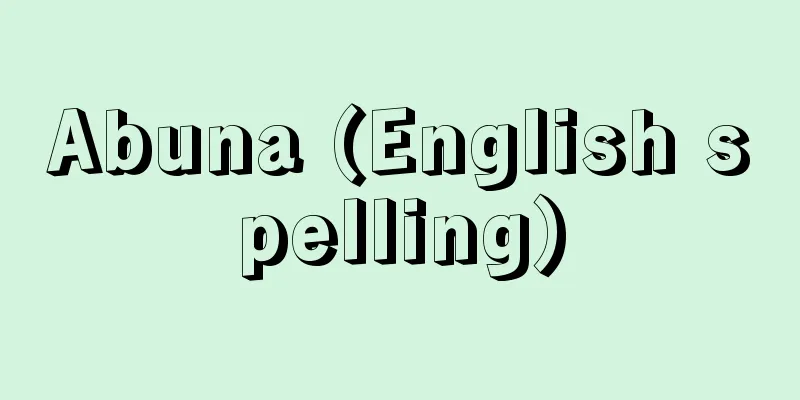Optical fiber - Hikari Fiber (English spelling) optical fiber
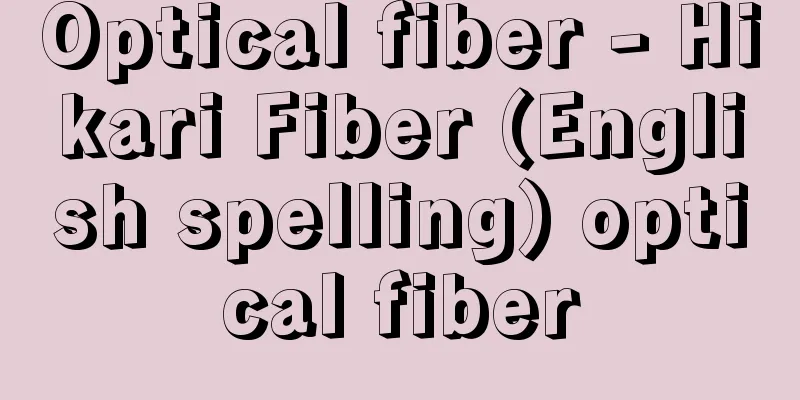
|
A waveguide used in optical communications. It means "fiber that guides light" and is composed of two types of transparent dielectric material (glass or plastic): a central core through which optical signals propagate, and a concentric clad that surrounds it. By making the refractive index of the core slightly (approximately 0.1 to 1.0%) higher than that of the clad, the total reflection phenomenon of light at the boundary between the core and clad is utilized to confine light inside the core, transmitting optical signals over long distances. [Ryo Tsuboi and Tetsuya Miki] Classification by materialOptical fibers are classified into three types according to the dielectric material used: quartz optical fiber, which is mainly made of quartz; multi-component glass optical fiber, which uses glass with the same composition as window glass; and plastic optical fiber (also called POF), which uses highly transparent plastic. Of these, quartz optical fiber has the lowest loss and excellent transmission characteristics, and is therefore widely used for optical communication. The outer diameter is standardized to 125 micrometers, which is as thin as a human hair. The diameter of the core that transmits the light is even thinner, ranging from a few micrometers to tens of micrometers. Multi-component glass optical fiber cannot achieve the low loss of quartz optical fiber, so it is limited to applications that do not require low loss as much as communication. In addition, plastic optical fiber is limited to short distances (tens to hundreds of meters) due to its high loss, but it is used for wiring between indoor devices and wire harnesses in automobiles because of its easy handling due to its large diameter (easy to connect, does not break even when bent tightly, etc.). [Ryo Tsuboi and Tetsuya Miki] Classification based on how light travelsDepending on how light travels through the optical fiber, it can be broadly divided into SM (single mode) and MM (multimode) types. SM optical fibers have a core diameter of several micrometers, and in such a small core, optical signals have only one propagation mode (way light travels), so they have excellent transmission characteristics. MM optical fibers have a large core diameter of several tens of micrometers, and there are many propagation modes. Therefore, optical signals are easily disturbed and they are not suitable for long-distance communication, but because the core diameter is large, connectors and other parts can be made inexpensively, so they are used for local area networks such as LANs. MM optical fibers are further divided into two types based on the shape of the refractive index of the core. There is the SI (step index) type, in which the refractive index of the core is kept high in a step-like manner compared to the cladding, and the GI (graded index) type, in which the refractive index gradually changes (graded) from the cladding boundary to the center of the core to a high value. In the GI type, the difference in propagation speed between propagation modes is minimized by making the change in refractive index parabolic, and the transmission characteristics are greatly improved compared to the SI type. For this reason, most commonly used MM type optical fibers are GI type. [Ryo Tsuboi and Tetsuya Miki] "Introduction to Optical Fiber Communication" by Minoru Shiba (1999, Tokyo Denki University Press) " ▽ "Optical Fiber Technology Supporting the IT Era" (2001), supervised by Noboru Sato and edited and published by the Institute of Electronics, Information and Communication Engineers " ▽ "Illustrated and Diagrammatic Book on the Mechanism of Optical Fiber Communication" by Shinji Yamashita (2002, Gijutsu Hyoronsha)" [Reference] | | | |Source: Shogakukan Encyclopedia Nipponica About Encyclopedia Nipponica Information | Legend |
|
光通信に用いられる導波路。「光を導く繊維」という意味であり、光信号が伝搬する中心部のコアとよばれる部分と、その周辺を覆う同心円状のクラッドとよばれる部分の2種類の透明な誘電体(ガラスまたはプラスチック)から構成されている。コアの屈折率をクラッドのそれよりもすこし(0.1~1.0%程度)大きくすることにより、コアとクラッドの境界での光の全反射現象を利用してコア内部に光を閉じ込めて、光信号を遠方に伝える。 [坪井 了・三木哲也] 材料による分類使用される誘電体の材料によって光ファイバーは3種類に分類される。石英を主体とした石英光ファイバー、窓ガラスと同様な成分のガラスを用いる多成分ガラス光ファイバー、および透明度の高いプラスチックを用いるプラスチック光ファイバー(POFともよばれる)である。このうち、損失がもっとも低く伝送特性も優れているのは石英光ファイバーであることから、これは光通信用として広く使われている。外径は125マイクロメートルに統一されており、髪の毛ほどの細さである。光を伝えるコアの径は数マイクロメートル~数十マイクロメートルとさらに細い。多成分ガラス光ファイバーは、石英光ファイバーのような低損失を実現できないので、通信用ほど低い損失を必要としない用途に限られる。また、プラスチック光ファイバーは損失が大きいため短距離(数十~数百メートル)の用途に限られるが、大口径化による取り扱いやすさ(接続が容易、曲げがきつくても折れにくいなど)から屋内の装置間の配線や自動車内のワイヤハーネス(配線)などに使用されている。 [坪井 了・三木哲也] 光の伝わり方による分類光ファイバー内の光の伝わり方により、SM(シングルモード)型とMM(マルチモード)型に大別できる。SM型光ファイバーは、コア径が数マイクロメートルであり、このような細径のコア内においては光信号はただひとつの伝搬モード(光線の伝わり方)しかもたないため、非常に優れた伝送特性を発揮する。MM型は、コア径が数十マイクロメートルの大きいものであり、伝搬モードが非常に多く存在する。そのため、光信号が乱れやすく長距離の通信には適していないが、コア径が大きいのでコネクターなどの部品が安価にできるため、LAN(ラン)などの構内用として使われる。MM型は、コア部の屈折率の形状によってさらに二つに細分される。コア部の屈折率をクラッドの部分に対して階段(ステップ)状に大きな値を保つSI(ステップインデックス)型と、クラッドの境界からコアの中心に向けて屈折率を緩やか(グレーデッド)に大きな値へと変化させるGI(グレーデッドインデックス)型である。GI型は、屈折率の変化を放物線状にすることによって伝搬モード間の伝搬速度差を極小化しており、SI型に比べて伝送特性が大きく改善される。そのため、通常使われているMM型光ファイバーはほとんどがGI型である。 [坪井 了・三木哲也] 『榛葉實著『光ファイバ通信概論』(1999・東京電機大学出版局)』▽『佐藤登監修、電子情報通信学会編・刊『IT時代を支える光ファイバ技術』(2001)』▽『山下真司著『イラスト・図解光ファイバ通信のしくみがわかる本』(2002・技術評論社)』 [参照項目] | | | |出典 小学館 日本大百科全書(ニッポニカ)日本大百科全書(ニッポニカ)について 情報 | 凡例 |
Recommend
"Africa: The People and Their Cultural History" - Africa
... In 1952, C.O. Sauer, in his book Agricultural...
Charles Babbage
1792‐1871 English applied mathematician. Known as ...
Omotosho, K. - Omotosho
...The works of Okoto, who unearthed the traditio...
Hatamti
…Elam is a name that appears in Mesopotamian sour...
Sepia officinalis (English spelling)
…While most other cuttlefish have striped dorsal ...
Miao
...the general term for the languages of the Mi...
Weissmuller, Johnny
Born June 2, 1904, near Timisoara, Romania [Died] ...
point de Venise à réseau (English spelling) point de Veniseareseau
...Alençon lace is also called the "queen of...
danse macabre (English spelling) danse macabre
For example, in Florence in 1433, Death stood on ...
Henle - Friedrich Gustav Jacob Henle
German anatomist. He studied medicine at the univ...
Top blowing converter process
…Then, in 1978, SG Thomas of England invented the...
Thought - Shisou
〘Noun〙① (━suru) To have an idea in one's mind....
Dunkleosteus
…Most placoderms are carnivorous, and the most re...
Rochea
…The representative genus Crassula has 200 specie...
Piecework wages - Iritsukeda Kabaraichingin
...Taylor's method of setting tasks and goals...
